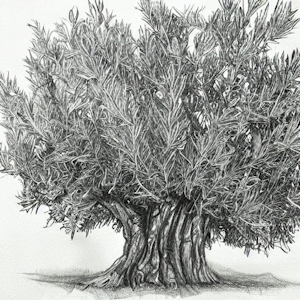HISTORY AND CULTURE OF OLIVE CULTIVATION ON THE ISLAND OF CRETE

The olive tree (scientific name: Olea europaea) is an evergreen, centuries-old tree, resistant to drought and high summer temperatures, while on the other hand it suffers at temperatures lower than 26.60ο F. It can be cultivated at an altitude of up to 900 meters above sea level, even in poor, stony and barren soils.
The number of cultivated trees worldwide exceeds one billion, while the average annual production of olive oil amounts to three million tons. Spain, Italy, and Greece are the countries with the largest production of olive oil and edible olives. The history and cultural traditions of these countries have been indelibly influenced by the cultivation of the so-called "sacred olive-tree".
Olive probably originates from the semi-mountainous regions of northern Syria. Its early cultivation began, for the first time on the European continent, from Crete in the middle of the Neolithic era (approx. 6000 - 4000 BC), when it is assumed by archaeological science that the wild olive was domesticated. Afterwards, systematic olive cultivation spread to mainland Greece, from where the ancient Greeks carried it through their colonies to the Mediterranean countries of Europe (Italy, France, Spain, Portugal).
In Minoan Crete, from the First palatial period (ca. 2000 BC) on, the olives and olive oil dominated all activities of Minoan life in agriculture, economy (local and export), religion and the arts. The archaeological dig has revealed important organic remains (olive kernels and wood of cultivated olive trees) as well as olive processing and olive oil storage facilities in the excavations of the palaces of Knossos, Phaistos and Zakros, and in other archaeological sites such as Archanes, Kommos, in Myrtos Ierapetras and others. In the case of the excavations in Zakros Sitias, a cup of edible olives was found in a water tank, which were still saving their flesh for more than 3500 years!
From the Minoan period until today, olive cultivation, processing, storage, and marketing of olive products is one of the main occupations of the inhabitants of Crete. This timeless activity on the one hand ensured their survival, and on the other hand left behind rich archaeological, artistic, and literary testimonies. The way olive cultivation is practiced on the island has changed over the centuries. From antiquity to the beginning of the 17th AD. century, the main crops on the island were cereals, legumes, and vines. The number of olive trees per cultivator was small, so that only the family's needs for oil, for food and lighting (lamp) were covered. From the beginning of 1600 AD until today, olive cultivation gradually became the main agricultural crop.
The olive varieties, which have been cultivated in Crete since ancient times, are the "Aegean chondrolia" in central Crete, the "Mastoides" in western Crete and, the "Koroneiki" throughout the island. Today, more than 42 million olive trees are cultivated in Crete, with an average annual production of 60-70,000 tons of extra virgin olive oil.
A significant number of these olive trees in the Cretan countryside show particularly impressive morphological characteristics of crown size and trunk plasticity, according to which the trees appear to be of "very old" age i.e., centuries old. According to tree-dating methods that have been applied, most of the living centuries-old olive trees were planted during the Venetian rule of the island (1206-1669 AD), while there are also trees that go back to earlier times and reach as far as the roman, classical, and late Minoan times (1500 BC).
In the last 30 to 40 years, many centuries-old trees have been uprooted and replaced with "modern" linear olive groves, at the altar of increasing productivity and carrying out major infrastructure projects. The on-site rescue and/or transplanting of historic olive trees based on spatial planning, is an action of great cultural and environmental value for the island of Crete.

